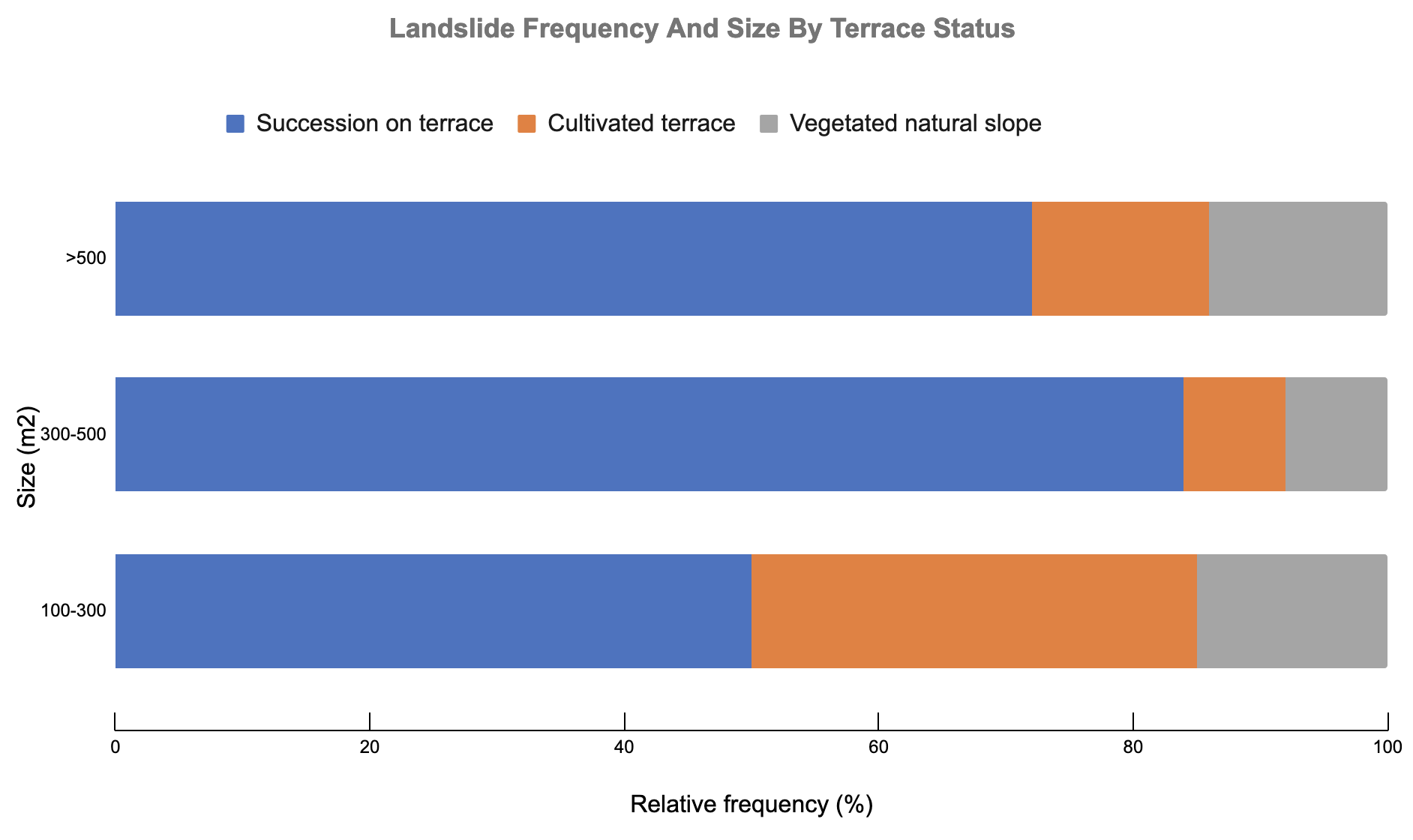14.5: Data Dive- Landslides and Ag Terraces
- Page ID
- 46713
Overview
The beauty of terraced agriculture almost makes the observer forget that it is still a form of habitat destruction and landscape modification. A 2019 study investigated the risk to terraced landscapes with varying states of upkeep after severe rainfall events, which increase chances of serious damage due to landslide events. The authors compared three classes of upkeep:
- Succession on terrace: Which includes all terraced areas in which cultivation activities ceased, and is currently substituted by both wood and shrub cover.
- Cultivated terrace: Which includes all areas which are still under any kind of cultivation, from olive groves, to vineyards, to other crops
- Vegetated natural slopes: Which refer to those areas covered by spontaneous vegetation which have never been terraced.
Landslide mapping was used to estimate the size of damage after a landslide event took place. Below is a graph for some of the published results:

Questions
- What is the independent (explanatory) variable and the dependent (response) variable?
- What question(s) are the authors trying to answer with this graph?
- Do the authors use any control category/variable to help clarify the patterns observed? If so, what?
- Which status has the most consistent increased landslide frequency?
- What landslide frequency patterns can you observe across the three size?
- How can the results of this graph to inform future projects/restoration efforts when a terrace is abandoned?
Raw Data For Above Graph(s)
Table \(\PageIndex{a}\): Raw data for percent breakdown of landslide frequency and size by terrace status. Graph by Rachel Schleiger (CC-BY-NC) modified from data in Agnoletti M, Errico A, Santoro A, Dani A, Preti F 2019.
| Terrace Status | 100-300 | 300-500 | Over 500 |
|---|---|---|---|
| Succession On Terrace | 50 | 84 | 72 |
| Cultivated Terrace | 35 | 8 | 14 |
| Vegetated Natural Slope | 15 | 8 | 14 |
Attribution
Rachel Schleiger (CC-BY-NC)


